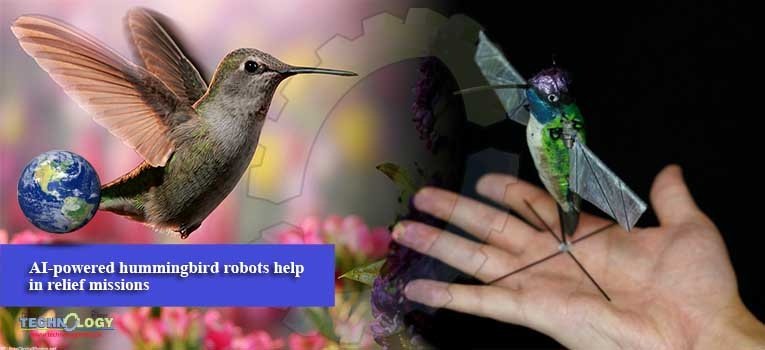Purdue University researchers have engineered flying robots that behave like hummingbird, trained by machine learning algorithms based on various techniques the bird uses naturally every day.
 This means that after learning from a simulation, the robot “knows” how to move around on its own like a hummingbird would, such as discerning when to perform an escape maneuver.
This means that after learning from a simulation, the robot “knows” how to move around on its own like a hummingbird would, such as discerning when to perform an escape maneuver.
Artificial intelligence, combined with flexible flapping wings, also allows the robot to teach itself new tricks. “The robot can essentially create a map without seeing its surroundings. This could be helpful in a situation when the robot might be searching for victims in a dark place.
Deng’s group and her collaborators studied hummingbirds themselves for multiple summers in Montana. They documented key hummingbird maneuvers, such as making a rapid 180-degree turn, and translated them to computer algorithms that the robot could learn from when hooked up to a simulation.
The robots could fly silently just as a real hummingbird does, making them more ideal for covert operations. And they stay steady through turbulence, which the researchers demonstrated by testing the dynamically scaled wings in an oil tank.
The robot requires only two motors and can control each wing independently of the other, which is how flying animals perform highly agile maneuvers in nature.
“An actual hummingbird has multiple groups of muscles to do power and steering strokes, but a robot should be as light as possible, so that you have maximum performance on minimal weight,” Deng said.
Robotic hummingbirds wouldn’t only help with search-and-rescue missions, but also allow biologists to more reliably study hummingbirds in their natural environment through the senses of a realistic robot.
The researchers will present their work on May 20 at the 2019 IEEE International Conference on Robotics and Automation in Montreal.